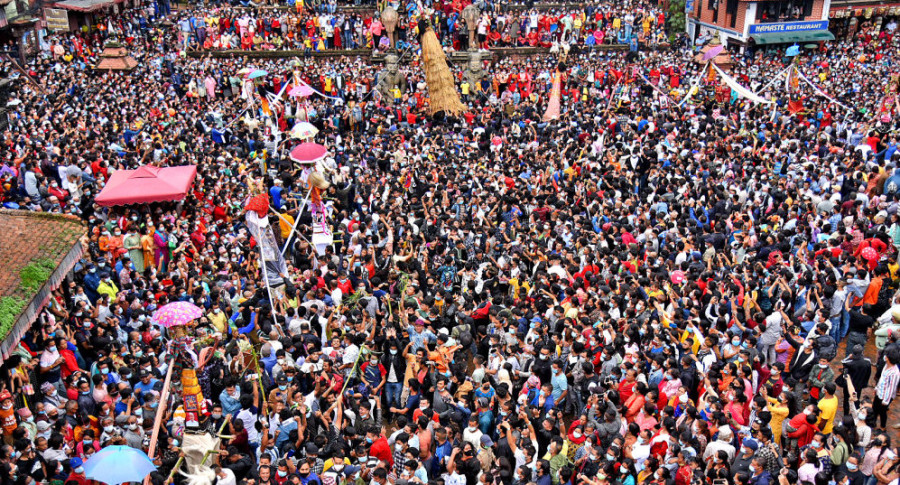Editorial
Celebrating festivals wisely
It may sound all too pessimistic, but the need of the hour is to exercise caution.
We can accurately categorise Nepal as not just a land of scenic beauty, but also a land of festivals with no fewer than 50 annual events taking into account various regions and ethnicities. Each of them presents a logistical nightmare for the authorities—the hurdles in managing them smoothly, without hurting the sentiments of those celebrating them, and more importantly, by keeping the public safe from the cyclical effects of the dreaded Covid-19 pandemic.
For many of us, jatras—or street festivals—might just be spectacles we have observed from a distance or on a television screen in the comfort of our homes. But, for those that participate, it conjures up deep emotions and religious significance. A repeat of the high-handed approach to handling last year’s Rato Machhindranath Jatra is certainly not what we expect from the authorities. However, the organisers need to be aware of the fragile situation the pandemic presents. Organisers and authorities need to work out the nitty-gritty of hosting such an event without adversely affecting public safety. If not, the spill-over effects of such an event can be disastrous for the public at large if ill-managed.
It’ll be all too early to assume that the pandemic has waned. With the vaccination drive still at its nascent stage—as per reports submitted to the World Health Organisation, about 8.2 million doses (taking into account the first and second doses) have been administered, which accounts for about 28 percent of the population. If we inoculate 150,000 people a week, it will only be towards the end of the year when we reach the 50 percent mark—still falling short of the 70 to 85 percent threshold to achieve herd immunity. Therefore, the authorities need to earnestly push for speedier vaccination of the populace to alleviate any cause for concern for the next festival that awaits us.
We have recently celebrated Janai Purnima, observed Gai Jatra, and will soon be celebrating Teej and Indra Jatra—all occasions for big gatherings. The disappointment of not being able to celebrate them in the usual way can be disheartening, to say the least. You may have to cope with the upheaval of emotions ranging from anger to grief which is entirely understandable.
The need of the hour is to accept the reality of the situation around us, and understand that things will not return to normal anytime soon. It may sound all too pessimistic, but it’s not all doom and gloom—the need of the hour is to exercise caution. The bigger picture is the safety of our loved ones; hence the most precious gift we can give them is good health, ensuring their protection and marking the occasion joyously but differently. Communicating with family members and friends and finding alternative ways to celebrate the festivities should require particular attention.
As things stand today, and going by reports, we are still expecting a third wave sometime in mid-October, right on time for Dashain. Without a doubt, the authorities are treading on a tightrope—“damned if you do and damned if you don’t” would justify the precarious nature of the situation. With festivities such as Dashain, Tihar and Chhath around the corner, and streams of people moving within the country and across the border with India, it is time for the authorities to think outside the box and relay information, paying paramount importance to the welfare of the public.




 18.12°C Kathmandu
18.12°C Kathmandu














